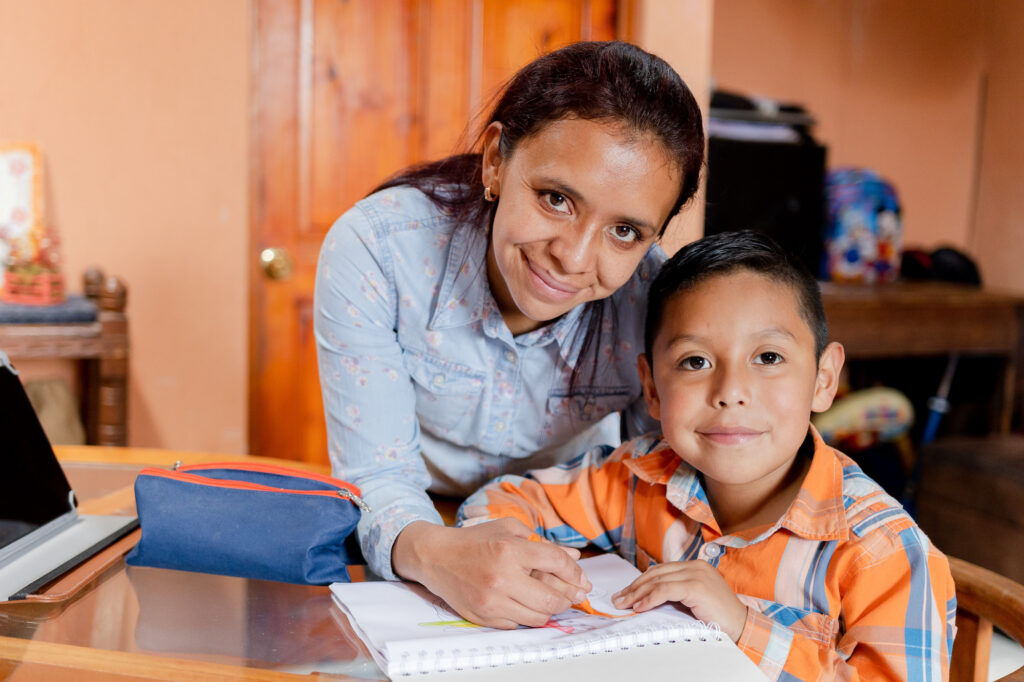Guadalupe Hernandez is confident her first-grader Breyden started the school year at Ellen Ochoa Elementary School in Tulsa knowing the alphabet, basic geometry and his five senses. Until now, the single mother of three has been comforted by something else — the guarantee of free school meals.
The pandemic-inspired federal program funding free meals for all students has ended, leaving Breyden and many Oklahoma students whose households hover near the poverty line at greater risk of going hungry during the school day.
Though a separate federal program known as the Community Eligibility Provision allows the nation’s highest poverty schools to continue serving breakfast and lunch at no cost, only half of Oklahoma’s 184 qualifying districts are participating. Some cite reimbursement rates that are less than the cost of meals.

Ineligible and non-participating districts are turning to free or reduced meal applications used before the pandemic, a process that comes with familiar stigmas for recipients and obstacles to applying for parents like Guadalupe Hernandez, whose primary language is Spanish. As of the 2020-2021 school year, 82.5% of Oklahoma’s English-learning students were economically disadvantaged.
Hernandez supports her family with an office cleaning job that pays $1,100 a month — one third of the maximum for an Oklahoma family of four to qualify for free school meals. Still, she worries about not qualifying.
“I would have to find someone to watch my kids after school so I can work more — that’s all I can do, or find a way to work more while they are in school,” she said in an interview conducted through an Oklahoma Watch interpreter. “I don’t make a lot of money.”

Some States Keep School Meals Free For All
California, Maine, Massachusetts, Nevada and Vermont have implemented free school meals for all students this year using state funds, and other states have legislation pending. Doing so in Oklahoma would require action by the state legislature.
Universal free meal waivers were one of a few pandemic-era programs aimed at addressing need in low-income families, said Chris Bernard, executive director of Hunger Free Oklahoma, a nonprofit aimed at ending hunger and food insecurity.
“We’re really doing a disservice by not keeping (programs like this) in place and it’s going to be harder for schools,” Bernard said. “It’s going to be harder for families. And I’m not sure we can predict every result from it yet, but over the course of this school year, you’re going to see it.”
Rita Gallardo is the CEO of La Cosecha, a food bank that provides groceries and financial assistance to East Tulsans. Of the 1,800 families La Cosecha serves weekly — up from 400 before the pandemic — about 65% to 70% are Hispanic, she said. The end of the federal free school meal program for all students increases food insecurity in her community, Gallardo said.
According to federal regulations, schools must translate any information about school programs and services for families that don’t speak English fluently. Commerce Public Schools, in the state’s northeast corner, has 26% Hispanic students and 16% English-learning students, state data shows. It uses bilingual paraprofessionals to communicate with families about the universal program ending.
With English language learners accounting for more than one-fourth of its enrollment, Tulsa Public Schools expanded back-to-school outreach efforts for middle and high school families, setting up computer banks for free or reduced applications.
English-learning families might still be hesitant to apply because of a misunderstanding of how the information they turn in will be used, said Clarissa Hayes, a deputy director at the Food Research and Action Center. While participation in free or reduced school meals won’t impact a family’s path to citizenship, she said parents might still be worried.
The vast majority of Oklahoma’s English-learning students are Hispanic. But in late 2019 and early 2020, the Food Research and Action Center and the National Immigration Law Center held focus groups and found that Spanish-speaking families were less likely than other groups to participate in federal programs like school meals because of concerns about their immigration status.
“What we believe is that healthy school meals for all — universal meals, (Community Eligibility Provision), whatever you want to use — I think that’s such a great pathway to helping to fight some of those challenges,” Hayes said.
Alternative For Some Schools
For schools that fit certain requirements, one form of universal free meals could serve as a way to make sure that no students go hungry.
To qualify for the Community Eligibility Provision, a school, group of schools or district must have 40% of their students qualify categorically for free school meals. Qualifications include being enrolled in food assistance programs like the Supplemental Nutrition Assistance Program or Temporary Assistance for Needy Families and being in Head Start. In many cases, families must still turn in an application confirming that they are categorically eligible.
All schools in the Oklahoma City Public Schools district, where 43.8% of Oklahoma City Public Schools students are categorically eligible, have been participating in the Community Eligibility Provision since 2017. Director of School Nutrition Services Shonia Hall said when compared with other federal options, the provision made the most sense because it allowed her staff to offer free meals at all schools more easily.
Hall said providing free meals to all students has eliminated the need for them to enter their lunch number, allowing them to move through the line faster. It’s also simplified the lunchtime process for parents, who no longer have to fill out free or reduced meal applications.

But the Community Eligibility Provision is not a viable option for many schools. According to Oklahoma State Department of Education data, 184 districts are eligible to participate in the program, but only 94 of them have used the option. Hayes, who’s from the Food Research and Action Center, said the decision often comes down to budget constraints.
Typically, schools receive reimbursements for each meal they serve, depending on whether the student is eligible for free, reduced or paid status.
Reimbursement for the Community Eligibility Provision is based on a formula, which identifies the percentage of categorically qualifying students in a school or group of schools. This number is increased by a multiplier to find the percentage of meals that would be reimbursed at the federal free rate of $3.93 for lunch.
Meals outside of that percentage would be reimbursed at the paid rate of $0.37 for lunch, meaning schools with lower amounts of directly certified students might receive a much lower reimbursement than they usually would.
Commerce Public Schools Superintendent Stephen Moss said 79% of the students in his district qualify for free or reduced meals, but a much lower percentage is categorically eligible for free meals. This means that even though the district qualifies for the Community Eligibility Provision, participating would cost it about $100,000 a year, which would have come from its general fund.
According to a 2020-2021 state minimum salary teacher schedule, the district could also use $100,000 to fund two new teacher positions.
There have also been some discrepancies between the Oklahoma State Department of Education and school districts on who qualifies. State Department of Education data indicates that all schools in the Ponca City Public Schools district are eligible for universal free meals, using SNAP data and information self-reported from schools. But district Nutrition Director Jeff Denton said to his knowledge, only two schools in the district qualify.
Denton said he saw the benefits of universal free meals during the pandemic and is now an advocate for continuing the practice. But he said he’s not convinced the Community Eligibility Provision is the solution for his district.
Many of Denton’s students already qualify for free or reduced meals but aren’t directly certified, so he said participating would cut his district’s income by about $500,000 a year.
Hayes said schools across the country should try to boost their direct certification numbers by regularly collecting data from food assistance programs and other sources. But she said another way the Community Eligibility Provision (CEP) can become accessible to more schools is by lowering the requirements for participating.
Across the country, 27 states are now a part of a pilot program that directly certifies students who qualify for Medicaid, but Oklahoma hasn’t joined. As of July, people who are 18 and under make up the largest percentage of Soonercare recipients.
The Food Action and Research Center also supports an update to national child nutrition programs that could lower the direct certification benchmark for schools and increase federal reimbursements, Hayes said.
“There are so many pieces when it comes to equity and to ensuring access for non-English speaking families, but we do believe that wider implementation of CEP can really help with that,” Hayes said.
Ari Fife is a Report for America corps member who covers race and equity issues for Oklahoma Watch. Contact her at (405) 517-2847 or afife@oklahomawatch.org. Follow her on Twitter at @arriifife.









